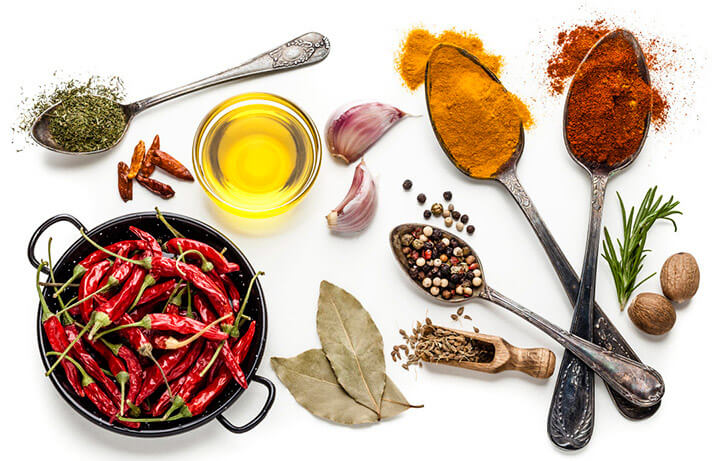Herbs and spices are very popular commodities, which are extensively used not only for flavoring food and beverages, but also for their antiseptic and medicinal properties. Bioactive components in spices and herbs have been reported associated with chemoprevention of inflammations, cancer, and other diseases. They have also been shown to prevent food deterioration. Along with the increasing market need for herbs and spices, the phenomenon of adulteration has become a severe problem in recent years.

Herbs and spices are commonly substituted with lower-value commodities or unrelated species with similar appearances. Moreover, herbs and spices are also subject to adulteration with foreign materials such as talc powder, ground walnut shells, sand, wheat starch, sawdust, etc.. Adulterations can also be introduced by addition of illegal dyes such as Sudan dyes. Moreover, mixing of herbs of different biological or geographical origins is another common type of adulteration. Adulterations of herbs and spices not only lead to erosion of their nutritional and medical values, but also can be a threat to consumer health and safety. Hence, the development of accurate, rapid, and reliable methods for the detection of these adulterations is crucial to ensure the quality of the commercial herb and spice products.
Lifeasible has many years of experience in the study of herbs and spices. In order to ensure the quality of herb and spice products, we offer a complete package of techniques which include, but not limited to:
The physical methods for the authentication of herbs and spices are macroscopic and microscopic analysis. Macroscopic analysis involves the morphological description of the plant part(s) such as shape, size, color, texture, odor, surface characteristics, etc.. Microscopy techniques ranging from light to electron microscopy techniques are commonly employed for powdered samples, basing on the observations of structural, cellular, and internal tissue features to differentiate among plant species.
The analytical techniques allow identification and authentication of herbs and spices by evaluating the chemical compositions or organic components present in the plants. Depending on the basic principles, the techniques can be grouped into chromatographic techniques, electrophoretic methods, spectroscopic analysis, and chemometric techniques. Chromatographic techniques include high-performance liquid chromatography (HPLC) with different types of separation methods (normal phase, reverse, and ion exchange) and detection methods (absorption in ultraviolet and visible region-UV/Vis, fluorescence, pulsed amperometric detector-PAD, and refractive index-RI), gas chromatography (GC) with a capillary column and flame ionization detector (FID), thermionic detector (TID), or mass spectrometry (MS), and so on. The commonly used electrophoretic method is capillary electrophoresis. The spectroscopic analysis allows nondestructive testing using small portion of samples for compound identifications. The spectroscopy techniques include UV, visible, mid- or near infrared (MIR, NIR), Raman, fluorescence, and nuclear magnetic resonance (NMR) spectroscopy. Chemometric approaches are multivariate statistical analysis methods used along with other analytical techniques to provide sample classification and discrimination. The commonly used chemometric approaches involve principal component analysis (PCA), linear discriminant analysis, soft independent modeling of class analogy (SIMCA), artificial neural networks (ANNs), knearest neighbor analysis (KNN), etc..
Biotechnological methods are DNA based methods employed to identify plant species adulterations. They are classified into three main types: PCR-based, hybridization-based, and sequencing-based. Chloroplastic region-ribulose biphosphate carboxylase large chain (rbcL) and the nuclear ribosomal region- internal transcribed spacer 2 (ITS2) have been reported to be effective DNA barcodes for detection of plant-based adulterants in herb and spice products.
Immunological assays utilize reaction of an antibody with specific plant protein to identify adulteration of other plant materials in herbs and spices.
Biosensors, such as electronic nose, are a robust indicators for the detection of adulteration in herbs and spices using nanotechnology.
Stable isotope analysis is based on the isotope ratio of C, H, O, N, which are commonly used for verification of geographical origin of herb and spice products.
Lifeasible, as a leader in food testing, provides reliable, fast, and cost-efficient services for the detection of herb and spice adulterants. Our specialist teams offer you one-stop services from sampling, testing to data interpreting. We provide tailored solutions for your specific products and objectives. We can help make your business more reliable and your products more popular. For more information about our herb and spice adulteration testing, please feel free to contact us.